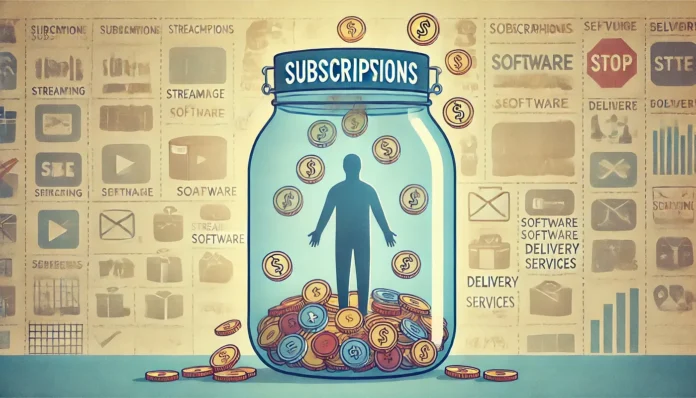
Subscription services are exploitive and banks should develop tools to help consumers manage them more effectively:
In 2020, BMW introduced a new version of its operating system that enabled subscriptions and other microtransactions. As The Verge article points out, this change led to some rather disturbing business “innovations” from the car maker: “In the case of heated seats, for example, BMW owners already have all the necessary components, but BMW has simply placed a software block on their functionality that buyers then have to pay to remove.”

BMW eventually relented on charging subscriptions for heated seats and steering wheels after a significant customer outcry, but the overall trend is alive and well.
Banks and fintech companies should focus on helping consumers fight back.
I think part of the challenge is that banks often get confused about the difference between a bill and a subscription. Banks tend to look at it in terms of capturing and retaining payment volume. Thus, banks have little interest in building better subscription management capabilities but a lot of interest in building bill payment solutions.
If banks bothered to think about this question – What’s the difference between a bill and a subscription? – from their customers’ perspective, they might come up with an answer more like this:
Bills are recurring financial obligations tied to products or services that deliver a steady, unchanging level of value to consumers. Banks should do everything they can to ensure that their customers are able to pay their bills on time every month and help their customers (where possible) to negotiate better rates for them.
Subscriptions are recurring financial obligations tied to products or services that deliver a variable or uncertain level of value to consumers. Banks should do everything they can to help their customers keep track of their subscriptions, constantly evaluate and prioritize their value, and cancel them where necessary.
I want a subscription command center.
When I open up a new debit card or credit card account, I want the provider to ask me to connect all of my existing bank and card accounts so that it can do a first pass at identifying all of my recurring transactions. I then want to be able to finalize my list of subscriptions manually, removing any mistakes and adding any ones that got missed. Then I want to leverage a card-on-file update service (powered by a provider like Knot) along with my provider’s virtual card issuing capability (powered by a provider like Lithic) to assign a unique virtual card to every subscription service that I currently use.
The subscription command center should be a centerpiece of my provider’s mobile app, allowing me to see all my subscriptions in one place (including how they fit into my overall budget and monthly cash flow) and to cancel them (by deactivating a virtual card) or sunset them (by setting a deactivation timeline for a virtual card) with the push of a button.
As a bonus, it would be nice if I could give my provider access to my email account so that it could monitor marketing messages from the providers of subscription services that I canceled (Please, we want you back. Here’s a special offer!) and notify me if there’s a particularly compelling offer that I might want to consider. (Johnson, 2024, paras. 3, 5, 7, 8, 33, 36-42)
With my topic being personal finance and wellness with a focus on subscription services, this article provided a perspective on how banks could help consumers fight back against the booming industry.
The concept of a subscription command center reflects the research I had done where services are heading towards a mega-platform; centralizing all bills and subscriptions under a single interface resembles a future of digital banking, one stripped of the distant innovations preventing it from forming today. This is a good reminder for when I research more radical technologies, I can’t rely on advancements that’ll take a decade to develop and expect them to solve current issues.
How can I turn projections of what the future may look like into actionable solutions available today? Would a subscription command center really change consumer spending, or just increase their awareness? Is one outcome better than the other? I believe increasing awareness alone can boost financial wellness, as it’ll give consumers the sense they have a firm grip on their subscriptions, but is that enough? How I push this concept further to then ensure a responsible future is a question I’ll have to address.
References
Johnson, A. (2024, January 26). Save Me From The Subscription Economy!. FinTech Takes. https://fintechtakes.com/articles/2024-01-26/subscription-economy/



